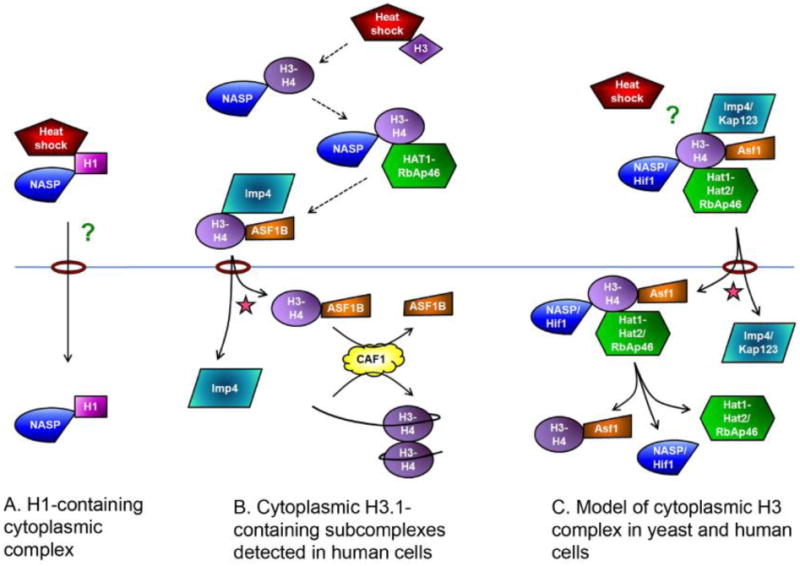Figure 1.

Cytoplasmic complexes of H1 and H3-H4 and their import pathways. Histones, importins and interacting proteins are labeled. The star represents Ran-GTP which promotes dissociation of the import complexes. The rings represent nuclear pore complexes in the nuclear membrane, separating the cytoplasm (upper) from the nucleus (lower). NASP refers to both sNASP and tNASP. A. H1 was found in a complex with NASP and a heat shock protein in the cytoplasm of murine cells. NASP promotes import of H1. Question mark denotes unknown import pathway. B. H3.1 containing subcomplexes detected in human cytosol. The proposed order of complex formation is indicated with dashed arrows based on references (45) and (73). Once inside the nucleus, ASF1B can donate H3.1-H4 for chromatin assembly by the CAF1 complex or other assembly proteins. C. Data from yeast and human cells indicates that H3 interacts with the proteins shown, suggesting the possibility of one large import complex. (Question mark indicates that heat shock proteins were found in human cells but not in yeast).
